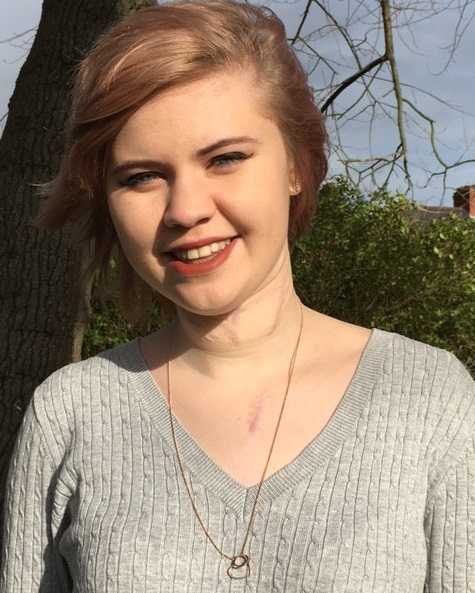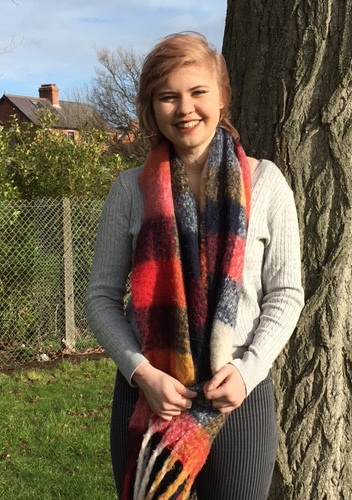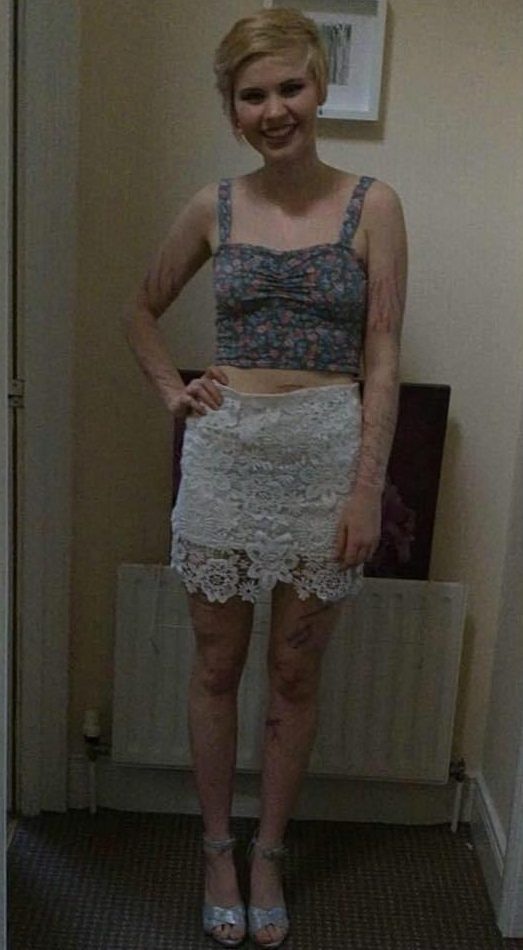A young woman woman who has attempted suicide over 100 times is calling on Instagram to enforce its new ban photos of self-harm and eating disorders.
Lucy Grainger, from Belfast, says it is too easy to find disturbing pictures and videos on social media.
The 21-year-old is recovering from bulimia, and spent her teenage years in-and-out of mental health facilities.
She says pro-anorexia, pro-suicide and pro-self-harm sites on social media spurred her on, showing graphic videos of users cutting themselves, displaying skeletal weight-loss photos, and even detailing suicide attempts.
Lucy now regularly reports these accounts to Instagram moderators, but shockingly she claims she is often told they don’t breach the site’s guidelines.
She said: “I just want Instagram to listen to its users. These images are too easy to find – in fact you don’t even have to go looking for them.
“It can get really dark. I’ve seen one video on Instagram of a girl standing at a bridge, saying she was going to jump off.”
Lucy, pictured as a teenager, when she was battling with her mental health – her scars visible
It comes after The Sun launched the You’re Not Alone campaign to raise awareness of mental health and suicide, and to remind anyone struggling with tough times that there is help at hand.
HARD UPBRINGING
Lucy had a difficult childhood, losing her dad to a heart attack when she was just three years old.
She was bullied in school because of her acne, and by the time she was 12 she’d begun self-harming.
“One of my friends showed me her scars,” she remembers. “I thought that if it helped her, then it might help me too.
“The first time I used our kitchen scissors to make scratches on my arms, and it progressed from there.
“I’d take apart razors, sharpeners – anything with a blade – and cut myself on my arms and thighs.
“I wore long sleeves to hide the injuries from my family and teachers.”
By the age of 13, Lucy was on a number of different medications for her skin, and in a bid to avoid having to go to school she decided to take an overdose.
She said: “I went through the bathroom cupboard and took all the tablets I could find. I just wanted it all to end. I wanted to go to bed and not wake up.
“I did wake up though. The next day I was really sick, so I told my mum I had a stomach upset. It got me off school for a few days.”
Lucy also developed bulimia, making herself vomit after meals in a bid to control her weight.
DISTURBING CONTENT
By the age of 15, she says she was taking inspiration from her social media accounts.
She explained: “I’d sit in my room for hours, just scrolling through photos of self-harm and pro-eating disorder accounts on Instagram.
“Users share tips on how to cut yourself, tips on how to throw up quietly, extreme diet plans, how to hide food, and loads of really graphic photos.
“There are so many accounts that show videos of people cutting themselves, photos of injuries and stitched wounds, pictures of young girls with skeletal frames saying how proud they are of there anorexia.
“There are stick thin models, with people saying ‘this is my goal and I don’t care if I die getting there’.
“People think Instagram is all cuddly cat photos and fitness inspo, but there’s a lot of much darker inspiration on there too. If you’re feeling vulnerable, it really feeds it.”
TURNING POINT
After managing to keep her illness a secret for years, Lucy finally sought help from her family GP when she was 17, and was admitted to a mental health facility as an in-patient.
Over the next few years she was hospitalised on numerous occasions – sometimes voluntarily and other times after being sectioned under the Mental Health Act.
She was diagnosed with bulimia and Emotionally Unstable Personality Disorder (EUPD), and is now on medication.
She says she attempted suicide over 100 times, even trying to take her own life in hospital.
The turning point came two years ago, when an old school friend put her in touch with the Prince’s Trust.

Lucy is calling on the major social media sites to do more to censor explicit content
She got involved in community projects and became an outspoken advocate of mental health, giving talks in schools, universities, youth clubs and juvenile detention centres.
Last October she was elected chair of the Northern Ireland Youth Forum, and her projects involve giving peer-to-peer support and raising awareness of suicide across the province.
She is also saving towards an Open University degree and dreams of becoming a social worker.
REPORTING PROFILES
Lucy says she now as a much healthier relationship with social media and no longer uses hashtags, while reporting any disturbing content.
However she bares the scars of her ordeal, with the old wounds to her neck, chest, arms and legs still clearly visible.
She said: “I report profiles on a daily basis, but they rarely get taken down.”
The response Lucy received from Instagram said: “We reviewed the account you reported for self injury and found it does not violate our Community Guidelines.
“Reports like yours are an important part of making Instagram a safe and welcoming place for everyone.”
Lucy said she is “disgusted” with the response and is calling on the major social media sites to do more to censor explicit content.
She said: “Kids have access to this stuff. Girls as young as 13 can be sat in their bedrooms scrolling through these images, and their parents probably have no idea what they’re looking at.
“There’s some really positive stuff out there. I now have a recovery profile and have made friends with people in recovery all over the world.
“But you don’t have to go looking for disturbing content. It finds you.”
Earlier this month, Instagram announced it was making changes to make the site safer for it’s users.
The site had outlined a number of changes, including a ban on images of self-harm, posts encouraging suicide, and flagging helpful organisations to direct users who had posted self-harm related content.
When asked by The Sun Online why the profiles Lucy has reported have not been taken down, Instagram said: “We are committed to removing graphic self-harm images from Instagram and have been clear that this will take time.
“We are quickly building new technologies and are training our team of reviewers to identify and remove this content.
“We need to strike a balance between acting quickly and acting responsibly, making sure people who have posted these images and may be in distress have access to support.”
***
Source: The Sun UK














